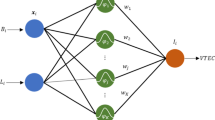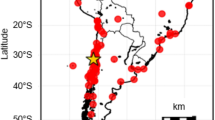Abstract
This study aimed to validate the interferometric synthetic aperture radar (InSAR) method by using relative and absolute Global Navigation Satellite System (GNSS) techniques. In this context, two land subsidence areas, one high (Mexico City) and one medium (Aguascalientes), were monitored between 2014 and 2018 by using Sentinel 1A satellite data. The monitoring was carried out with the Small Baseline Subset (SBAS) technique using 46 images for Mexico City and 18 images for Aguascalientes. Concordantly, the GNSS Continuously Operating Reference Station (CORS) data in the regions were analyzed with relative and Precise Point Positioning (PPP) GNSS analysis techniques. The time series obtained from three different analyses were compared and the results were evaluated in light of statistical criteria. According to the results, it is determined that the InSAR-SBAS technique can vary up to ± 20 mm from the displacement values obtained from GNSS due to various noise sources. Such deviations were limited to a few samples, and in general the differentiations were reasonable in the range of 7–8 mm. The difference between the deformation velocity estimation results obtained from the three different methods varied between 3 and 10 mm/year. In this context, these findings suggest that the InSAR-SBAS technique is an effective method for monitoring land deformation with the accuracy of sub-centimeter decided. In addition, PPP which has become an increasingly popular technique showed fast and reliable results in the range of 5–10 mm for InSAR verification. Moreover, with this study, most current results for Mexico City, which is the world’s fastest subsiding metropole, were achieved. In the central region of the city, the detected 300 mm/year of subsidence rate was updated as 370 mm/year. In addition, Aguascalientes was monitored by using the Sentinel 1A satellite mission for the first time in this study. The 60 mm/year subsidence rate obtained for Aguascalientes in previous studies was updated and it was estimated that there are zones where this rate reaches up to − 115 mm/year levels. In this regard, it was concluded that the deformation rate has increased for both regions since the previous monitoring studies.








Similar content being viewed by others
References
Abd-Elazeem, M., Farah, A., Farrag, F. (2011). Assessment study of using online (CSRS) GPS-PPP Service for mapping applications in Egypt. Journal of Geodetic Science, 1(3), 233–239.
Armaṡ, I., Gheorghe, M., Lendvai, A.M., Dumitru, P.D., Bȧdescu, O., Cȧlin, A. (2016). InSAR validation based on GNSS measurements in Bucharest. International Journal of Remote Sensing, 37(23), 5565–5580.
Bahadur, B., & Nohutcu, M. (2018). PPPH: a MATLAB-based software for multi-GNSS precise point positioning analysis. GPS Solutions, 22(4), 113.
Berardino, P., Fornaro, G., Lanari, R., Sansosti, E. (2002). A new algorithm for surface deformation monitoring based on small baseline differential SAR interferograms. IEEE Transactions on Geoscience and Remote Sensing, 40(11), 2375–2383.
Bovenga, F., Nitti, D.O., Fornaro, G., Radicioni, F., Stoppini, A., Brigante, R. (2013). Using C/X-band SAR interferometry and GNSS measurements for the Assisi landslide analysis. International Journal of Remote Sensing, 34(11), 4083–4104.
Castellazzi, P., Arroyo-domínguez, N., Martel, R., Calderhead, A.I., Normand, J.C.L., Gárfias, J., Rivera, A. (2016). Land subsidence in major cities of Central Mexico: Interpreting I,nSAR-derived land subsidence mapping with hydrogeological data. International Journal of Applied Earth Observation and Geoinformation, 47, 102–111.
Casu, F. (2009). The Small BAseline Subset technique: performance assessment and new developments for surface deformation analysis of very extended areas. Doktora Tezi.
CSRS PPP Online Processing Service (2018). https://webapp.geod.nrcan.gc.ca/geod/tools-outils/ppp.php?locale=en. Accessed: 10.10.2018.
Chaussard, E., Wdowinski, S., Cabral-Cano, E., Amelung, F. (2014). Land subsidence in central Mexico detected by ALOS inSAR time-series. Remote Sensing of Environment, 140, 94–106.
Dawson, J.H., & et al. (2008). Satellite radar interferometry with application to the observation of surface deformation in Australia.
ESA Sentinel Scientific Data Hub (2018). https://scihub.esa.int/dhus/. Accessed: 10.10.2018.
Ferretti, A., Prati, C., Rocca, F. (2001). Permanent scatterers in SAR interferometry. IEEE Transactions on Geoscience and Remote Sensing, 39(1), 8–20.
Gabriel, A.K., Goldstein, R.M., Zebker, H.A. (1989). Mapping small elevation changes over large areas: differential radar interferometry. Journal of Geophysical Research: Solid Earth, 94(B7), 9183–9191.
Herring, T A, King, R W, McClusky, S C. (2010). Introduction to Gamit/Globk massachusetts institute of technology. Massachusetts: Cambridge.
Liu, G., Jia, H., Zhang, R., Zhang, H., Jia, H., Yu, B., Sang, M. (2011). Exploration of subsidence estimation by persistent scatterer inSAR on time series of high resolution terraSAR-x images. IEEE Journal of Selected Topics in Applied Earth Observations and Remote Sensing, 4(1), 159–170.
Liu, D., Shao, Y., Liu, Z., Riedel, B., Sowter, A., Niemeier, W., Bian, Z. (2014). Evaluation of inSAR and tomoSAR for monitoring deformations caused by mining in a mountainous area with high resolution satellite-based SAR. Remote Sensing, 6(2), 1476–1495.
Massonnet, D., Rossi, M, Carmona, C., Adragna, F., Peltzer, G., Feigl, K., Rabaute, T. (1993). The displacement field of the Landers earthquake mapped by radar interferometry. Nature, 364 (6433), 138.
Osmanoġlu, B., Dixon, T.H., Wdowinski, S., Cabral-Cano, E., Jiang, Y. (2011). Mexico City subsidence observed with persistent scatterer inSAR. International Journal of Applied Earth Observation and Geoinformation, 13(1), 1–12.
Pacheco-Martínez, J., Hernandez-Marín, M., Burbey, T.J., González-Cervantes, N., Ortíz-Lozano, J.Á., Zermeño-De-Leon, M.E., Solís-Pinto, A. (2013). Land subsidence and ground failure associated to groundwater exploitation in the Aguascalientes Valley, Mexico. Engineering Geology, 164, 172–186.
Pacheco-Martínez, J., Cabral-Cano, E., Wdowinski, S., Hernández-Marín, M., Ortiz-Lozano, J., Zermeno-de León, M. (2015). Application of inSAR and gravimetry for land subsidence hazard zoning in Aguascalientes, Mexico. Remote Sensing, 7(12), 17035–17050.
Rosen, P.A., Hensley, S., Joughin, I.R., Li, F.K., Madsen, S.N., Rodriguez, E., Goldstein, R.M. (2000). Synthetic aperture radar interferometry. Proceedings of the IEEE, 88(3), 333–382.
Sandwell, D., Mellors, R., Tong, X., Wei, M., Wessel, P. (2011). Open radar interferometry software for mapping surface deformation. Eos, Transactions American Geophysical Union, 92(28), 234–234.
Sowter, A., Amat, M.B.C., Cigna, F., Marsh, S., Athab, A., Alshammari, L. (2016). Mexico City land subsidence in 2014–2015 with Sentinel-1 IW TOPS: Results using the Intermittent SBAS (ISBAS) technique. International Journal of Applied Earth Observation and Geoinformation, 52, 230–242.
Strozzi, T., & Wegmuller, U. (1999). Land subsidence in Mexico City mapped by ERS differential SAR interferometry. In IEEE 1999 International Geoscience and Remote Sensing Symposium. IGARSS’99 (Cat. No. 99CH36293) (Vol. 4, pp. 1940–1942): IEEE.
Su, K., & Jin, S. (2018). Improvement of multi-GNSS Precise Point Positioning Performances with Real Meteorological Data. The Journal of Navigation, 71(6), 1363–1380.
Ustun, A, Tusat, E, Yalvac, S. (2010). Preliminary results of land subsidence monitoring project in Konya Closed Basin between 2006–2009 by means of GNSS observations. Natural Hazards and Earth System Sciences, 10(6), 1151–1157.
Üstün, A., Tuṡat, E., Yalvaċ, S., Özkan, İ., Eren, Y., Özdemir, A., Bildirici, İ., et al. (2015). Land subsidence in Konya Closed Basin and its spatio-temporal detection by GPS and DInSAR. Environmental Earth Sciences, 73(10), 6691–6703.
Yan, Y., Doin, M.-P., Lopez-Quiroz, P., Tupin, F., Fruneau, B., Pinel, V., Trouvé, E. (2012). Mexico City subsidence measured by inSAR time series: Joint analysis using PS and SBAS approaches. IEEE Journal of Selected Topics in Applied Earth Observations and Remote Sensing, 5(4), 1312–1326.
Yigit, C.O., Zeki Coskun, M., Yavasoglu, H., Arslan, A., Kalkan, Y. (2016). The potential of GPS Precise Point Positioning method for point displacement monitoring: A case study. Measurement, 91, 398–404.
Zebker, H.A., & Villasenor, J. (1992). Decorrelation in interferometric radar echoes. IEEE Transactions on Geoscience and Remote Sensing, 30(5), 950–959.
Acknowledgments
The author would like to thank to anonymous reviewers for their insightful comments on the paper.
Author information
Authors and Affiliations
Corresponding author
Additional information
Publisher’s note
Springer Nature remains neutral with regard to jurisdictional claims in published maps and institutional affiliations.
Rights and permissions
About this article
Cite this article
Yalvac, S. Validating InSAR-SBAS results by means of different GNSS analysis techniques in medium- and high-grade deformation areas. Environ Monit Assess 192, 120 (2020). https://doi.org/10.1007/s10661-019-8009-8
Received:
Accepted:
Published:
DOI: https://doi.org/10.1007/s10661-019-8009-8




